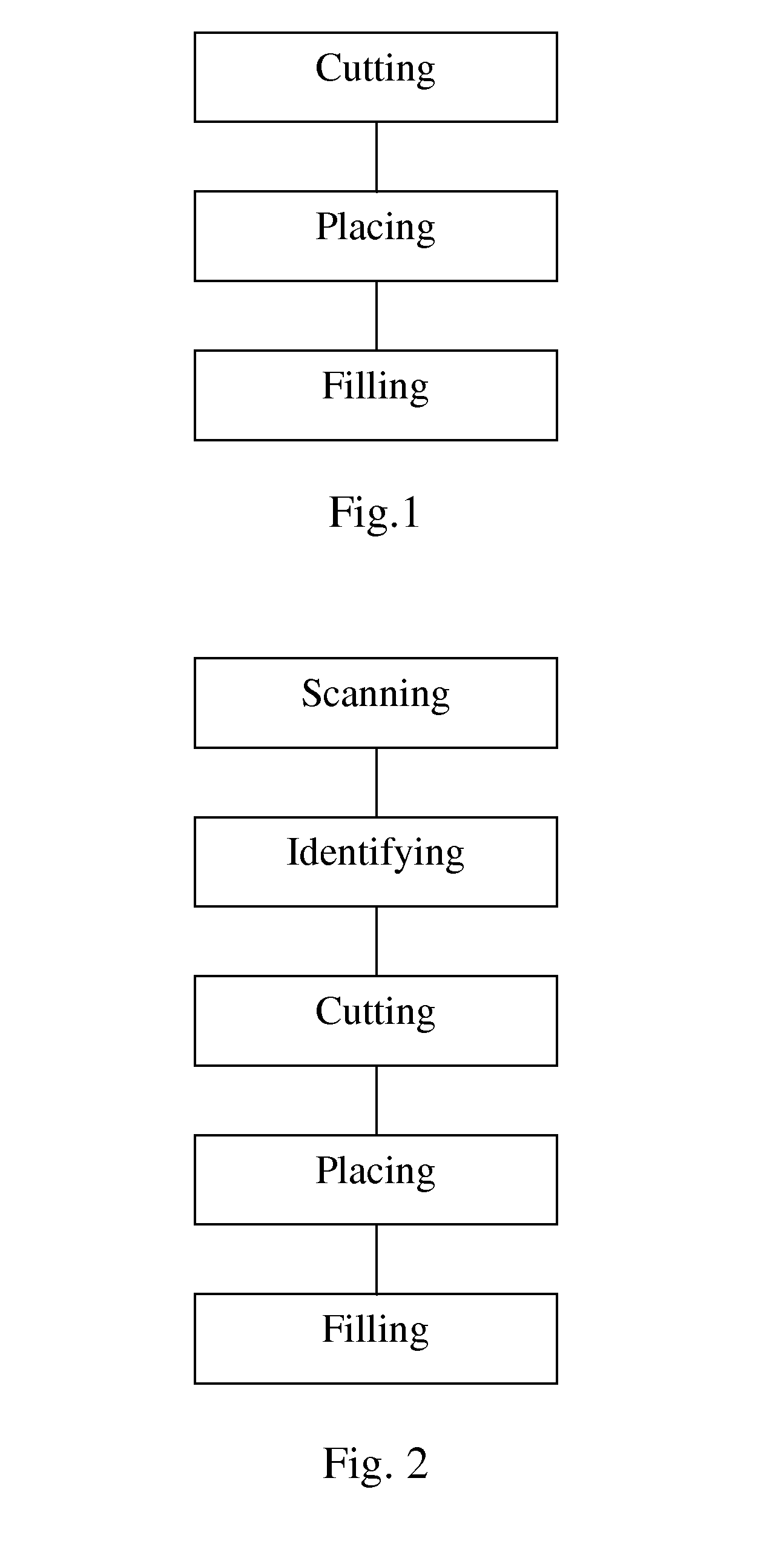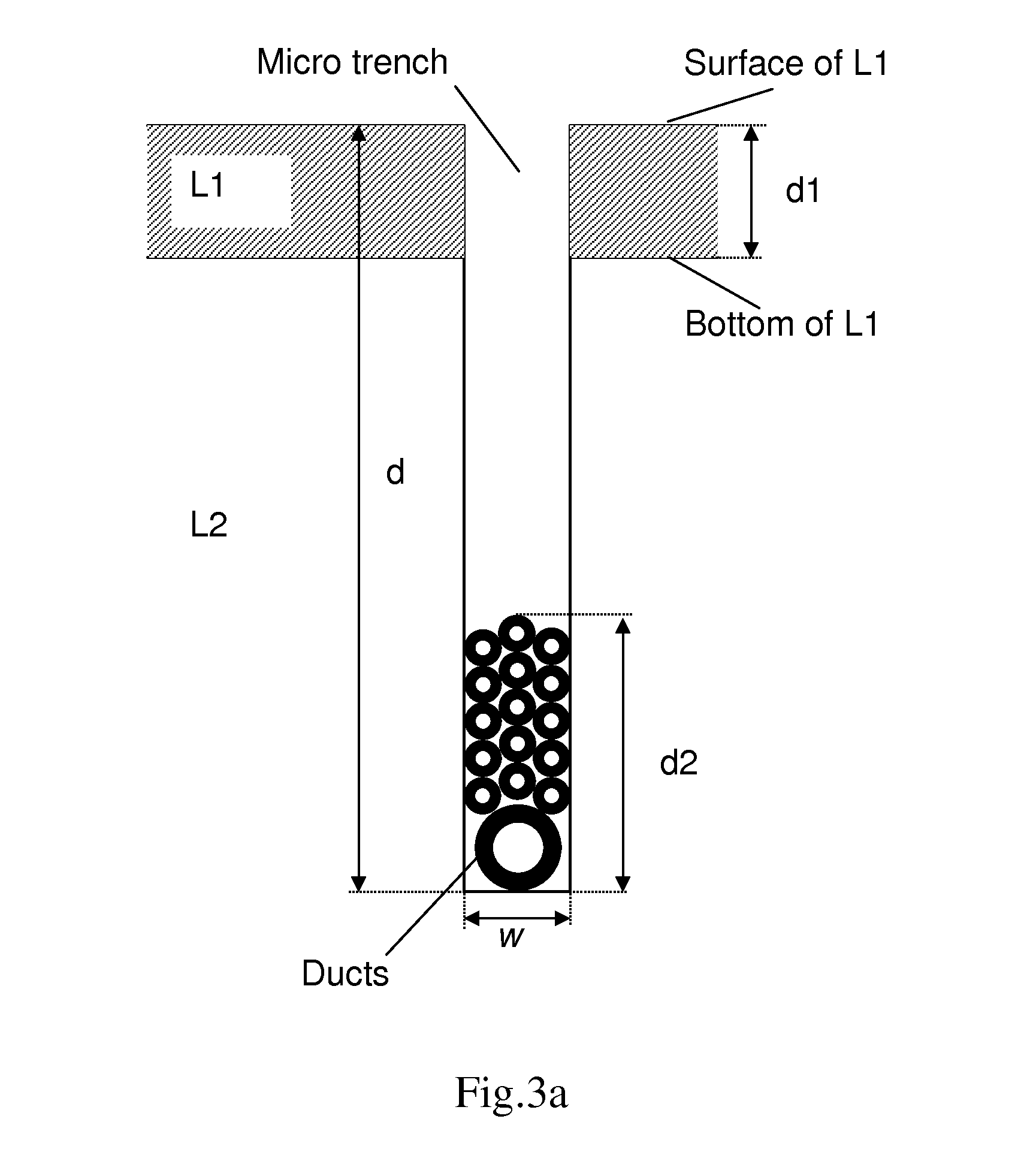Method for placing at least one duct/communication cable below a road surface in an area
a technology of ducts and communication cables, applied in metal sawing accessories, instruments, roads, etc., can solve the problems of increasing the cost of connecting, affecting the expansion of fibre optic networks in residential areas, and high excavation and restoration costs of road layers, so as to reduce the cost of fibre installation
- Summary
- Abstract
- Description
- Claims
- Application Information
AI Technical Summary
Benefits of technology
Problems solved by technology
Method used
Image
Examples
Embodiment Construction
[0025]To achieve the above mentioned objects a method for placing at least one duct / communication cable below a road surface in an area is provided by the inventors.
[0026]The area comprises a first layer L1 and a second layer L2. The first layer L1 is a road layer, such as asphalt or concrete, and the second layer L2 is a bearing layer for the first layer L1 and is located below the first layer L1.
[0027]With reference to FIG. 1, which shows a flow chart of a method according to the present invention, the method for placing at least one duct / communication cable below a road surface in the area comprises the steps of:[0028]cutting a micro trench in the area through the first layer L1 into the second layer L2;[0029]placing at least one duct / communication cable in the micro trench so that the at least one duct / communication cable is placed below the first layer L1; and[0030]filling the micro trench so as to restore the road surface.
[0031]FIGS. 3a and 3b schematically shows a cross secti...
PUM
| Property | Measurement | Unit |
|---|---|---|
| width | aaaaa | aaaaa |
| width | aaaaa | aaaaa |
| width | aaaaa | aaaaa |
Abstract
Description
Claims
Application Information
 Login to View More
Login to View More - R&D
- Intellectual Property
- Life Sciences
- Materials
- Tech Scout
- Unparalleled Data Quality
- Higher Quality Content
- 60% Fewer Hallucinations
Browse by: Latest US Patents, China's latest patents, Technical Efficacy Thesaurus, Application Domain, Technology Topic, Popular Technical Reports.
© 2025 PatSnap. All rights reserved.Legal|Privacy policy|Modern Slavery Act Transparency Statement|Sitemap|About US| Contact US: help@patsnap.com



